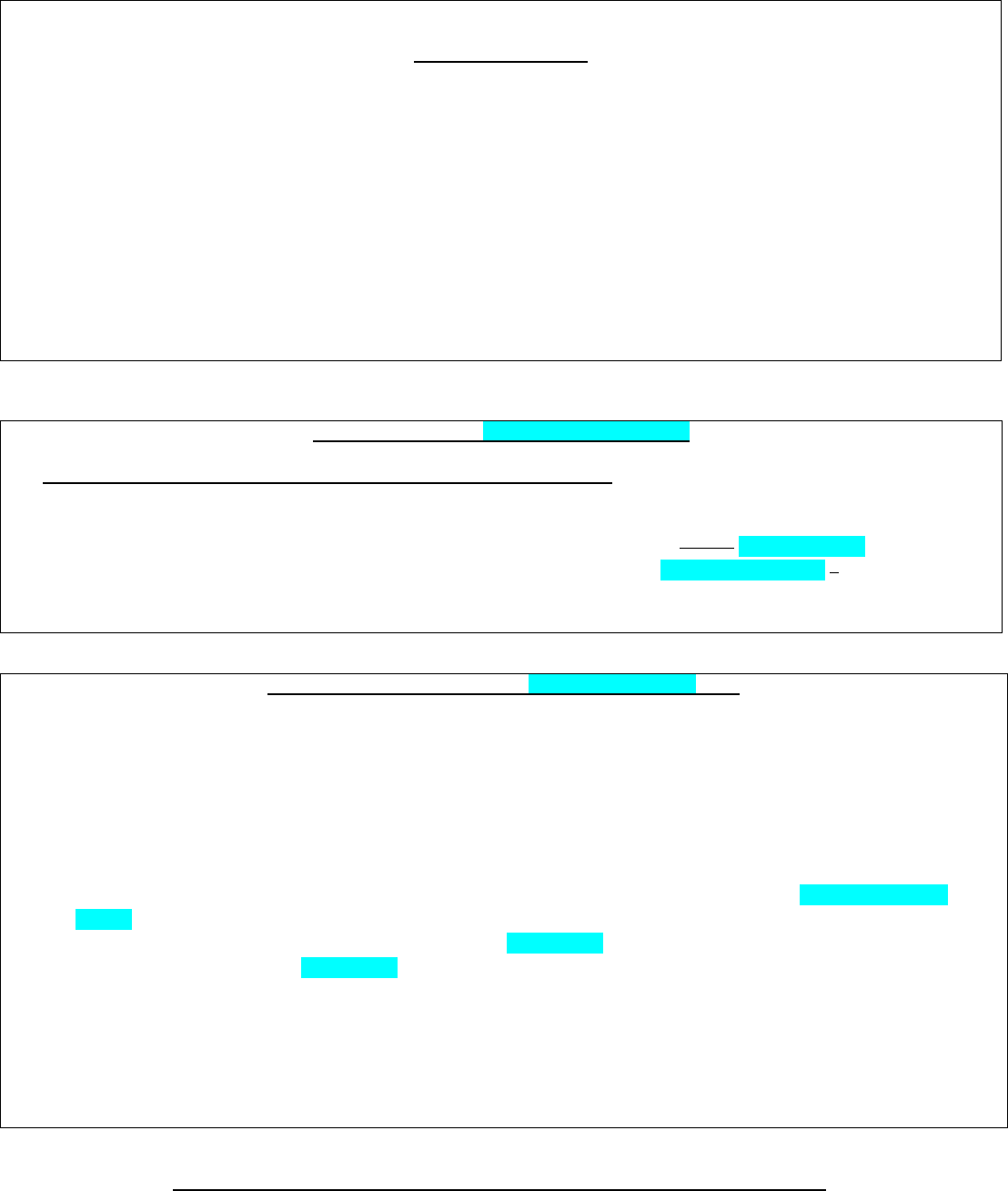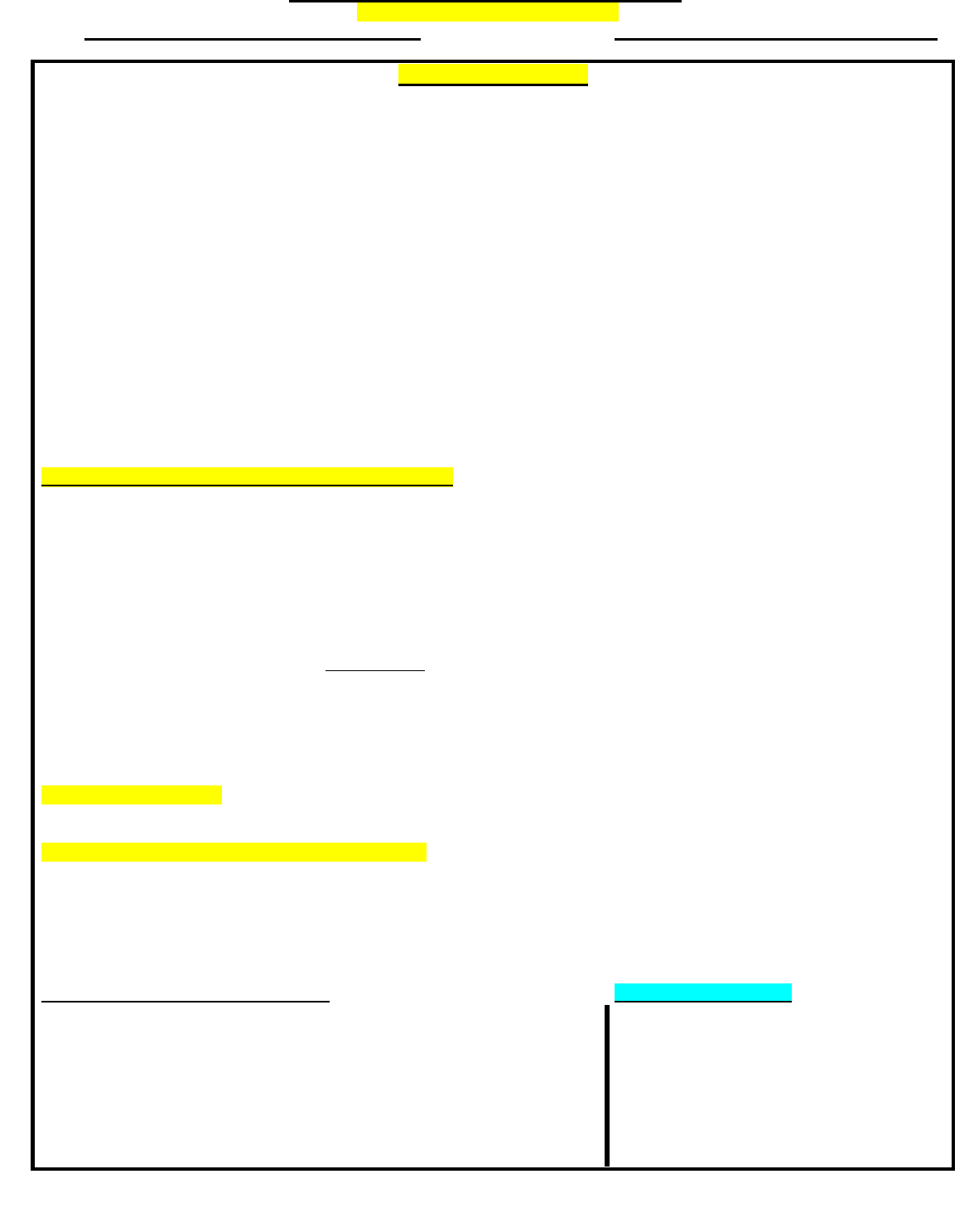
1
ACUTE CONCUSSION EVALUATION (ACE)
CARE PLAN
PARENT / STUDENT REPORT
You have been diagnosed with a suspected concussion (also known as a mild traumatic brain injury). This personal plan is
based on your symptoms and is designed to help speed your recovery. Your careful attention to it can also prevent further
injury.
PARENT INFORMATION & HISTORY: Your child needs to see their primary care physician within 24-48 hours
Rest is the key. You should not participate in any high risk activities (e.j., sports, physical education (PE), riding a bike,
etc.) if you still have any of the symptoms below. It is important to limit activities that require a lot of thinking or
concentration (homework, job-related activities), as this can also make your symptoms worse. If you no longer have any
symptoms and believe that your concentration and things are back to normal, you can slowly and carefully return to your
daily activities. Children and teenagers will need help from their parents, teachers, PE teachers, coaches, or athletic
trainers to help monitor their recovery and return to activities.
Physical
Physical
Thinking
Emotional
Sleep
Headaches
Sensitivity to light
Mental Foggy
Irritability
Drowsiness
Nausea
Sensitivity to noise
Problems
concentrating
Sadness
Sleeping more than usual
Vomiting
Numbness/Tingling
Problems
remembering
Feeling more emotional
Sleeping less than usual
Fatigue
Visual problems
Feeling slowed
down
Nervousness
Trouble falling asleep
Dizziness
Balance Problems
RED FLAGS: Call 911, your doctor or go to your nearest emergency department if your child suddenly experiences
any of the following
Headaches that
worsen
Looks very drowsy, can’t be
awakened
Unusual behavior change
Slurred Speech
Seizures
Can’t recognize people or places
Repeated vomiting
Increasing irritability
Neck Pain
Weakness or numbness in arms or
legs
Increasing confusion
Loss of consciousness
GENERAL INFORMATION FOR PARENT AND STUDENT:
Returning to Daily Activities
1. Get lots of rest. Be sure to get enough sleep at night – no late nights. Keep the same bedtime weekdays and
weekends.
2. Take daytime naps or rest breaks when you feel tired or fatigued.
3. Limit physical activity as well as activities that require a lot of thinking or concentration. These activities can
make symptoms worse.
Physical activity includes PE, sports practices, weight-training, running, exercising, heavy lifting, etc.
Thinking and concentration activities (e.g., homework, classwork load, job-related activity).
4. Drink lots of fluids and eat carbohydrates or protein to main appropriate blood sugar levels.
5. As symptoms decrease, you may begin to gradually return to your daily activities. If symptoms worsen or
return, lessen your activities, and then try again to increase your activities gradually.
6. During recovery, it is normal to feel frustrated and sad when you do not feel right and you can’t be as active as usual.
7. Repeated evaluation of your symptoms is recommended to help guide recovery.
Student Name: _____________________________
DOB: ____________________ Age: _____________
Date: ___________________ ID/MR# Student #__________
Date of Injury: _____________________

2
Returning to School
1. If you (or your child) are still having symptoms of concussion you may need extra help to perform school-related
activities. As your (or your child’s) symptoms decrease during recovery, the extra help or supports can be removed
gradually.
2. Inform the teacher(s), school nurse, school psychologist or counselor, and administrator(s) about your (or your child’s)
injury and symptoms. School personnel should be instructed to watch for:
Increased problems, paying attention or concentration
Increased problems, remembering or learning new information
Longer time needed to complete task or assignments
Greater irritability, less able to cope with stress
Symptoms worsen (e.g., headache, tiredness) when doing homework
EDUCATION CODE SECTION 49475 (THE CALIFORNIA CONCUSSION LAW)
An athlete who is suspected of sustaining a concussion or head injury in an athletic activity shall be immediately removed
from the activity for the remainder of the day, and shall not be permitted to return to the activity until he or she is evaluated
by a licensed health care provider, trained in the management of concussions, acting with the scope of his or her practice.
The athlete shall not be permitted to return to the activity until he or she receives written clearance to return to the activity
from that licensed health care provider.
Returning to Sports/ P.E. (Physical Activity)
1. You should NEVER return to play if you still have ANY symptoms – (Be sure that you do not have any symptoms
at rest and while doing any physical activity and/or activities that require a lot of thinking or concentration.)
2. Be sure that the PE teacher, coach, and/or athletic trainer are aware of your injury and symptoms.
3. It is normal to feel frustrated, sad and even angry because you cannot return to sports physical activity right away.
With any injury, a full recovery will reduce the chances of getting hurt again. If you are in sports it it is better to miss
one or two games than the whole season.
Gradual Return To Play (RTP) or Physical Activity Plan
1. No physical activity
2. Low levels of physical activity (i.e., symptoms do not come back during or after the activity). This includes walking,
light jogging, light stationary biking, and light weightlifting (lower weight, higher reps, no beach, and no squat).
3. Moderate levels of physical activity with body/head movement. This includes moderate jogging, brief running,
moderate-intensity stationary biking; moderate-intensity weightlifting (reduced time and/or reduced weight from the
typical routine).
4. Strenuous non-contact physical activity. This includes sprinting/running, high-intensity stationary biking, and
regular weightlifting routine, non-contact sport-specific drills (in 3 planes of movement).*** (If in regular PE or
sports)
5. Limited Contact/ Full contact in controlled practice. ** (If in sports)
6. Full contact in game play.** (If in sports)
*Minimum of 6 days to pass steps 1-4. Written physician (MD/ DO) clearance for return to play required after
successful completion of steps 1-4.
**MANDATORY: you must complete at least one contact practice before return to competition.
(Highly recommended that Step 5 be divided into 2 contact practice days.)

3
Parent Signature: Date:
_________________________ __________
□ I have reviewed this plan and give my
permission for school to contact physician for
consultation and exchange of information.
□ I decline medical care
Adopted: School Version of Acute Concussion Evaluation (ACE) Care Plan
“Heads Up: Brain Injury in Your Practice” tool kit form developed by CDC.
PHYSICIAN ORDERS FOR SCHOOL
(Yellow Sections for Physician Use)
NAME: ____________________________________ BIRTH DATE: ___________________________________
Returning to School
Until you (or your child) have fully recovered, the following supports are recommended: (M.D. check all that apply)
□ No return to school. Return on (date)___________________________________________________
□ Return to school with following supports. Review on (date)__________________________________
□ Shortened day. Recommend ____ hours per day until (date)_________________________________
□ Shortened classes (i.e., rest breaks during classes). Maximum class length: ______________minutes.
□ Allow extra time to complete coursework/assignments and test.
□ Lessen homework load by _______%. Maximum length or nightly homework: _____________minutes.
□ No significant classroom or standardized testing at this time.
□ Check for the return of symptoms (use symptom table on front page of this form) when doing activities that require
a lot of attention or concentration.
□ Take a rest breaks during the day as needed.
□ Request meeting of 504 or School Management Team to discuss this plan and needed supports.
The following are recommended at the present time: (M.D. check all that apply)
□ Do not return to PE class at this time
□ Return to PE class
□ Do not return to sports practices/games at this time
□ Gradual return to sports practices under the supervision of an appropriate health care provider (e.g., athletic trainer,
coach, or physical education teacher).
Return to play should occur in gradual steps beginning with aerobic exercise only to increase your heart rate (e.g.,
stationary cycle); moving to increasing your heart rate with movement (e.g., running); then adding controlled
contact if appropriate; and finally return to sports competition.
Pay careful attention to your symptoms and your thinking and concentration skills at each stage of activity. Move
to the next level of activity only if you do not experience any symptoms at each level. If your symptoms return, let
your health care provider know, return to the first level, and restart the program gradually.
Additional Instructions: __________________________________________________________________________
_______________________________________________________________________________________________
_______________________________________________________________________________________________
This referral plan is based on today’s evaluation:
□ Return to this office. Date/Time:________________________________________________
□ Refer to: Neurosurgery _____Neurology_____Sports Medicine_____Physiatrist_____Psychiatrist_____Other_____
□ Refer for neuropsychological testing
□ Other________________________________________________________________________________________
MEDICAL PROVIDER INFORMATION PARENT PERMISSION
Medical Provider (Print Name):____________________________________
Medical Provider Signature: ______________________________________
Address:_____________________________________________________
Or Stamp)
Phone: _________________________________
